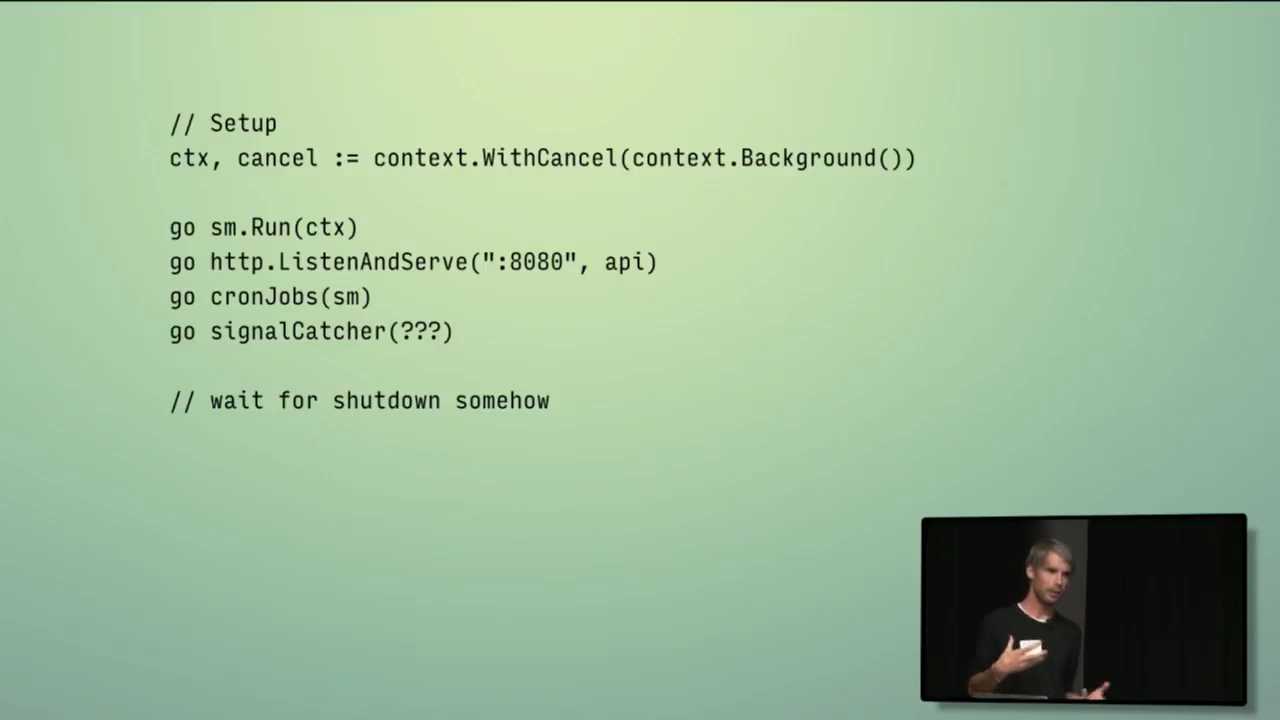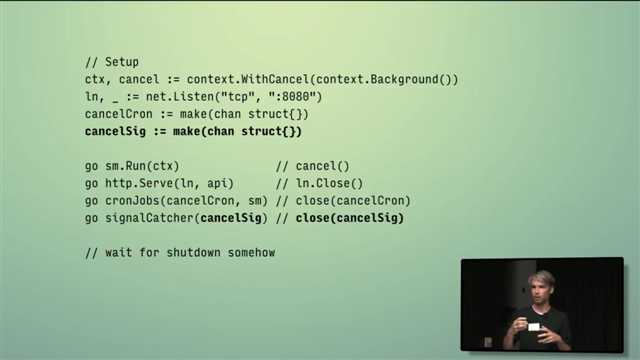Go routine 编排框架:oklog/run 包
Posted guangze
tags:
篇首语:本文由小常识网(cha138.com)小编为大家整理,主要介绍了Go routine 编排框架:oklog/run 包相关的知识,希望对你有一定的参考价值。
Go routine 编排框架:oklog/run 包
问题引入
oklog/run 包提供了一套非常简单、易用的 Go routine 编排框架。在介绍 oklog/run 前,我们先考虑以下问题:
假设我们有四个 Go routine 组件,如图所示,分别是运行一个状态机 sm.Run 、启动一个 HTTP 服务器、执行定时任务 cronJobs(sm) 读取状态机状态、和运行信号监听器。每个 Go routine 组件互相独立运行。
问题在于,我们如何将各个组件作为一个整体运行,并有序地结束?

对于每一个 Go routine 组件,我们都有相应的办法来执行结束操作。状态机通过 Context 对象,HTTP 服务器通过调用 Listener 的 Close 方法,定时任务和监听器通过 channel。当一个组件结束的时候,需要通知其他组件有序执行结束操作。这个问题的解决方法可以用 Actor 模型来描述。每个 Go routine 都是一个 actor,互相独立,互相之间只能通过 message 通信。oklog/run 包实现了 Actor 模型,能非常简洁的实现 Go routine 编排功能。

oklog/run 包介绍
oklog/run 包非常简单,只有一个类型,两个方法,共 60 行代码。其中 Group 是一组 actor,通过调用 Add 方法将 actor 添加到 Group 中。
type Group
func (g *Group) Add(execute func() error, interrupt func(error))
func (g *Group) Run() errortype Group struct {
actors []actor
}
func (g *Group) Add(execute func() error, interrupt func(error)) {
g.actors = append(g.actors, actor{execute, interrupt})
}每个 actor 有两个方法:execute 和 interrupt。execute 完成 Go routine 的计算任务,interrupt 结束 Go routine 并退出。
type actor struct {
execute func() error
interrupt func(error)
}调用 Run 方法后会启动所有 Go routine(或者称为 actor),并等待第一个结束的 Go routine(无论正常退出或因为异常终止)。一旦捕获到第一个结束信号,会依次结束其他 Go routine 直到所有 Go routine 完全退出。
func (g *Group) Run() error {
if len(g.actors) == 0 {
return nil
}
// Run each actor.
errors := make(chan error, len(g.actors))
for _, a := range g.actors {
go func(a actor) {
errors <- a.execute()
}(a)
}
// Wait for the first actor to stop.
err := <-errors
// Signal all actors to stop.
for _, a := range g.actors {
a.interrupt(err)
}
// Wait for all actors to stop.
for i := 1; i < cap(errors); i++ {
<-errors
}
// Return the original error.
return err
}使用例子
下面例子定义了三个 actor,前两个 actor 一直等待。第三个 actor 在 3s 后结束退出。引起前两个 actor 退出。
package main
import (
"fmt"
"github.com/oklog/run"
"time"
)
func main() {
g := run.Group{}
{
cancel := make(chan struct{})
g.Add(
func() error {
select {
case <- cancel:
fmt.Println("Go routine 1 is closed")
break
}
return nil
},
func(error) {
close(cancel)
},
)
}
{
cancel := make(chan struct{})
g.Add(
func() error {
select {
case <- cancel:
fmt.Println("Go routine 2 is closed")
break
}
return nil
},
func(error) {
close(cancel)
},
)
}
{
g.Add(
func() error {
for i := 0; i <= 3; i++ {
time.Sleep(1 * time.Second)
fmt.Println("Go routine 3 is sleeping...")
}
fmt.Println("Go routine 3 is closed")
return nil
},
func(error) {
return
},
)
}
g.Run()
}打印结果:
Go routine 3 is sleeping...
Go routine 3 is sleeping...
Go routine 3 is sleeping...
Go routine 3 is closed
Go routine 2 is closed
Go routine 1 is closed参考资料
Ways To Do Things - Peter Bourgon
以上是关于Go routine 编排框架:oklog/run 包的主要内容,如果未能解决你的问题,请参考以下文章